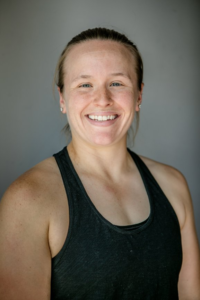You’re ready to action and get started, but there’s one problem…
Where do you start?
Your brain is probably FLOODED with questions, most stemming from the fear of starting.
But there’s good news.
You don’t need to answer all those questions in your head.
You ONLY need to answer 11 questions.
Even better, I’ve sorted through all the questions that fly through my head to pick out the BEST 11 questions to ask yourself.
Check them out.
What Do You Want?
You’d think this was obvious right because this question is essentially asking “what is your goal?”
But you need to get specific in what you want.
Here are the typical goals I hear:
- Lose weight
- Get fit
- Lean out
- Build strength
- Get in shape
Now, those are definitely things you can want (and you should!) but ask yourself what do you REALLY want?
What amount of weight do you want to lose?
What would getting fit look like for you?
How lean do you want to get? What’s a goal body fat percentage?
You need to get specific about what it is that you want.
Specificity gives you direction because without it, you’re going to continue working your
butt off without actually knowing where you’re going.
Why Do You Want It?
What does every young kid want to know?
WHY?
Regardless the detailed instruction and incredible positive spin kids ALWAYS ask WHY.
But why don’t we ever ask why?
Something happened as we grew up and we stopped asking WHY, but it’s time we get it back!
Once you’ve determined WHAT you want, you need to dig down to understand WHY you want it.
But here’s the thing, you can’t ask why just once.
We want to get to the core and emotionally connect to this goal.
Ask yourself why over and over again until it sparks some real emotion and quite frankly, is hard to answer.
“Why would I do that?” (See what I did there ;))
Because it connects you to the goal, motivates you, and increases your likelihood to succeed.
Is It Realistic?
Goals in a way are making your dreams a reality.
I hate to be the bearer of bad news, but sometimes those dreams need to stay in that imaginative space…
There was a time where I thought that in order to be considered an attractive female that I needed to weight 130 pounds. I hated being labeled the “stocky” girl and feeling like I never physically fit in with my friends.
130 was the magic number, and if I’m being honest, it was really 125 because you want to be below “the borderline.”
Not. A. Chance.
I would be a miserable and unhealthy 130-pound woman.
That was an unrealistic goal for me.
And do you know what?
It’s one of many unrealistic goals I’ve set for myself because I never asked myself this question beforehand. I rolled with it because I was trying to make my dreams a reality.
Ask yourself this question and answer honestly. If it’s not, no harm and no foul, just find what IS realistic for you.
How Can You Break It Down Into Smaller Goals?
The most important piece to be realistic with is the timeframe for achieving your goal.
It’s probably going to take some time; therefore, I recommend you break that goal down into smaller milestones to work towards.
Right now, I’m trying to drop a weight class, which means I have to lose 12 pounds by competition day. Now, I’m not really interested in a big water cut (using water to drop weight prior to a meet) or starvation (have you met me?) as means for getting to that next weight class. We’re taking the longer, more sustainable, and enjoyable route. That means I need to be down to 158.4 pounds come competition day (early- to mid-2020).
Personally, I’m not much for procrastination, but when it comes to a cut, I am queen of #procrastinationnation.
“Oh, I can have ice cream today because the meet is still months away.”
“Chipotle for lunch again! Eh, I still have time.”
SUCH A BAD IDEA.
I have to set small goals and benchmarks for myself while also reminding myself of the long-term goal. It helps keep me focused and works against my natural tendency to procrastinate.
- Here are the smaller goals I’ve set for myself:
Thanksgiving Day – 165.0# - Monday After Thanksgiving – 165.0#
- New Year’s Day – 162.0#
- Valentine’s Day – 158.0
Yes, I picked all major holidays for 2 reasons:
- They’re easy to remember and brought up often so I’m reminded.
- I typically want to enjoy and celebrate these days, so it doubles as a reward day.
Take your goal and break it down into smaller goals or benchmarks so your focus and motivation stay high.
How Will You Track Your Progress?
As you breakdown and set up your smaller goals, you need to determine how you will track your progress along the journey.
Your goal may clearly point to your method for tracking. For example, if your goals is to lose 20 pounds, then stepping on the scale is an obvious part of progress assessment.
Don’t settle for just one means of tracking progress.
All of my clients use two forms of tracking AT MINMUM.
The reason for multiple forms of tracking is because at some point, no matter how hard you work, you’re going to hit a snag in your progress.
IT SUCKS.
And if you’re only using one method for tracking, it can knock all the wind from your sails.
Quite honestly, it can break you.
Here’s a list of methods for tracking:
- Scale
- Measurements
- Body Fat Percentage
- BMI
- Clothing Sizes and Fit
- Journal
- Biofeedback
- Cardiovascular Output and Endurance
- Strength of Movements
When Will You Check In?
Adding to HOW you’ll track your progress is WHEN you will check in and assess progress.
You’ll obviously check in at your end date and each of your benchmarks, but how about between that? How often will you be checking in?
It makes no sense to check in at every small goal. You’ll never know if you need to adjust and your progress is sure to be off.
But truthfully, there really is no magic number for frequency of check ins.
The most important thing is that it’s manageable for you.
For each of those methods for tracking listed above, here’s how often I recommend checking in:
- Scale – 2x per week
- Measurements – 1x per month
- Body Fat Percentage – 1x per month
- BMI – 1x per month
- Clothing Sizes and Fit – Regularly
- Journal – Daily
- Biofeedback – Daily
- Cardiovascular Output and Endurance – Every 6 to 8 Weeks
- Strength of Movements – Every 6 to 8 Weeks
Did You Write It Down?
You can dream and think about your goals all you want, but until they leave your headspace, they will stay as dreams and thoughts.
I encourage every client to write down their goals. Actually, I tell clients to write down their goals MULTIPLE times and leave them in MULTIPLE places.
The minute you write your goals down, you give them life by putting them out into the world. Each time you write it down, you give more life to it. Then you strategically place it in your life, you’re reminded of that goal throughout your day.
Here’s where I recommend putting your written goals:
- In your bathroom (mirror or most-frequented drawer)
- In your kitchen (fridge or pantry door)
- On your computer
- On your phone
- On your desk (in plain sight)
- In your gym bag
- In your car (steering wheel)
Who Did You Tell?
Let’s REALLY take that goal out of your headspace and add some reality to it.
Tell other people!
For some reason, we live in a time where we’re afraid to share our goals with others. We fear judgment and appearing inadequate.
Here’s what I have to say to that – forget them!
When someone doubts or criticizes my goals or dreams, I feel sorry for them.
In my personal opinion, anyone who judges or criticizes is jealous, and those feelings are more a deflection from their own personal insecurities.
Tell your family members, your friends, coworkers, and whoever else you want. You’re likely to find more people support you than expected, and you’ll build an army of support, motivation, and accountability.
What Happens When You Slip Up?
I’d love to tell you that you answer all the above questions and it’s smooth sailing, but it’s not…
You’re going to make mistakes – big and small.
What do you do?
Not sure?
Plan for it.
Think about your tendencies, biggest challenges, and where you’ve failed before.
Now get into the detail about how to get back on track.
Get specific in how to determine how exactly you won’t let one slip turn into another and another and another.
What Does Success Look Like?
Done with the negative.
Let’s talk about what success looks like!
One softball season we had our team practice what it looked to make the last out of a championship game.
I’ve had girls practice their home run trot.
I’ve worked with teams where we wrote out what our championship celebration looked like.
So picture it.
What does it look like?
Fill it in with the details! Get specific!
I want it to be so clear that when you picture it now, you feel like it’s happening!
That vision gives you the feeling of success, and it drives and motivates you to continue down the path regardless the challenges.
When Can I Start?
If you’re not prepared and motivated to get going after answering these questions, you didn’t go deep enough in your responses.
These questions are designed to go through every detail to help map it out and reduce the uncertainty. These questions are designed to show you the path and to help get you started and to help you see that the time is now.
So, when can you start?
About The Author

Jordan Davies is the Co-Owner of Complete Performance. Jordan has her B.S. in Exercise Science and Psychology, and her M.A. in Holistic Health Studies. She is a CSCS certified strength and conditioning coach, and a PN-1 and NCI-1 certified nutrition coach. She loves to study how the human body needs to be moved and nourished and making that fit to your unique lifestyle. Click Here Now to Apply for Coaching with Jordan.





